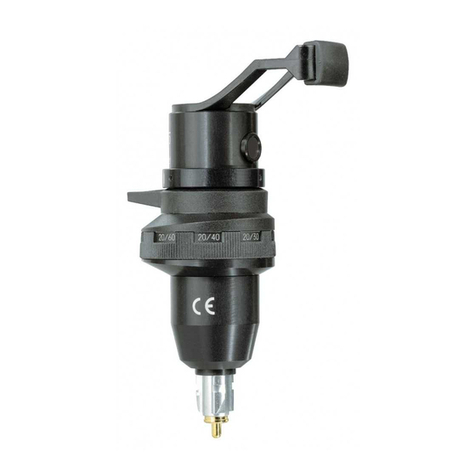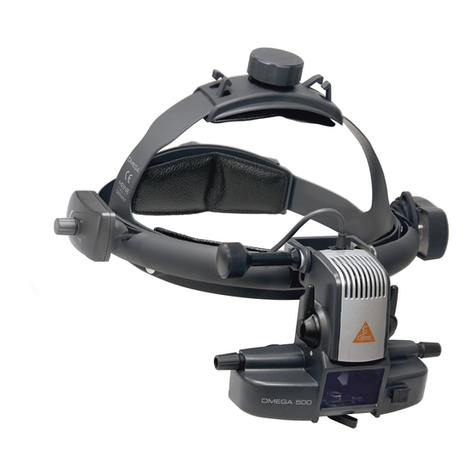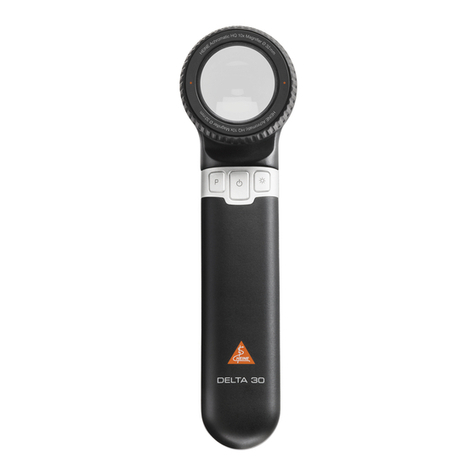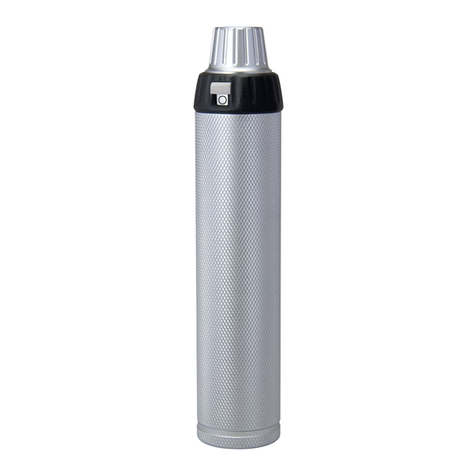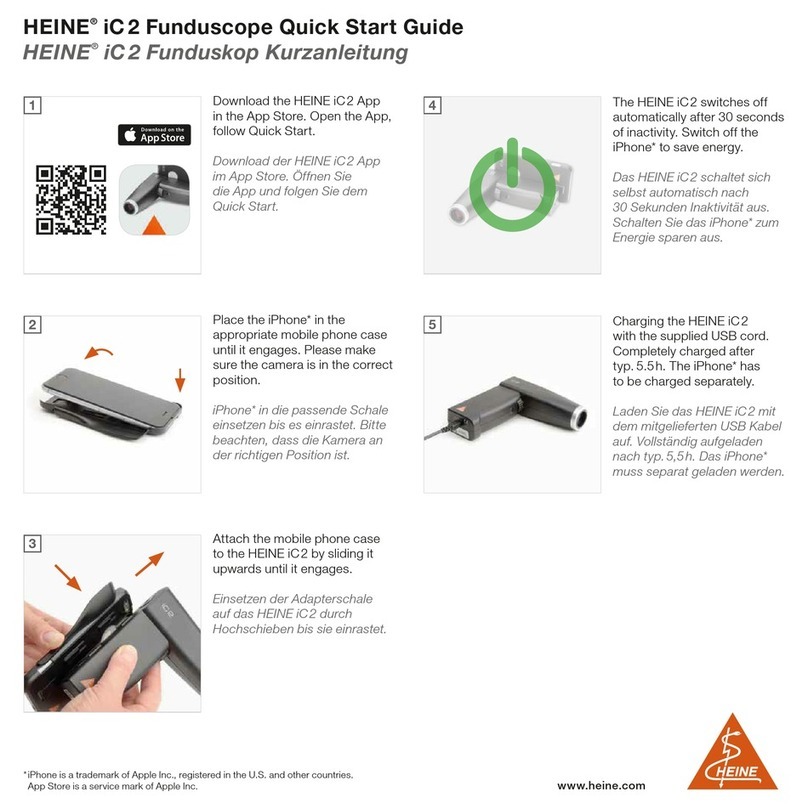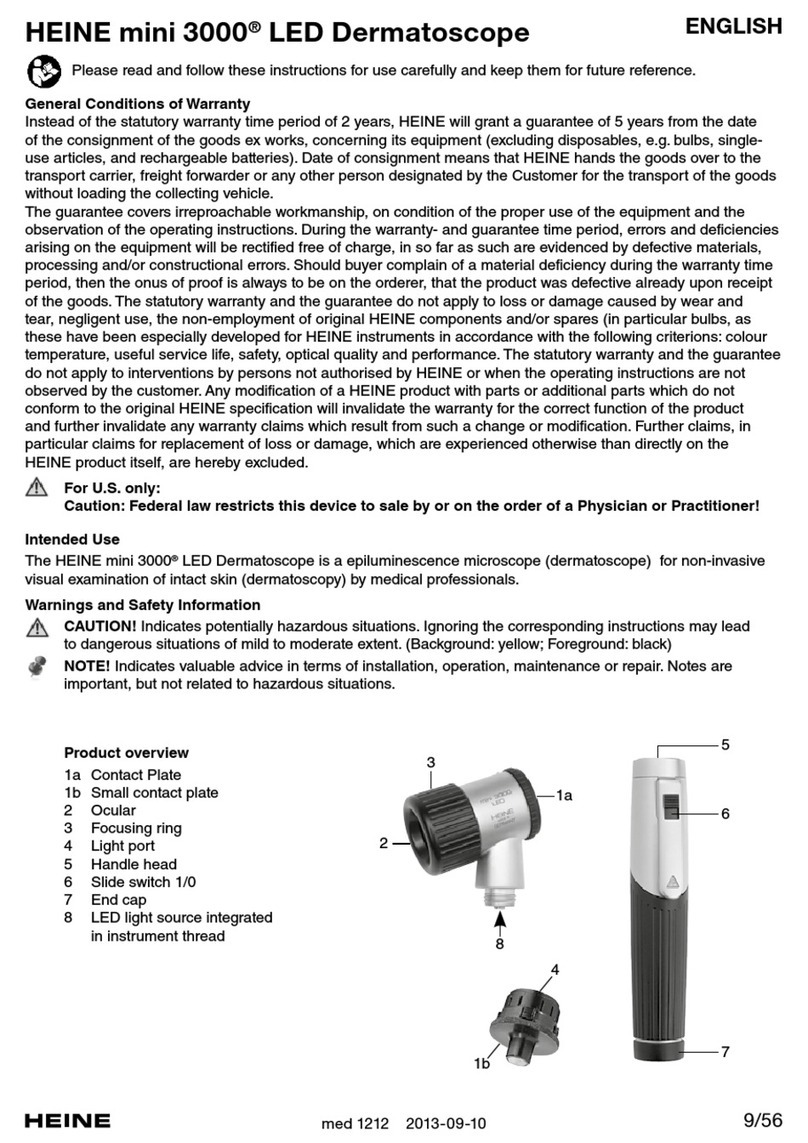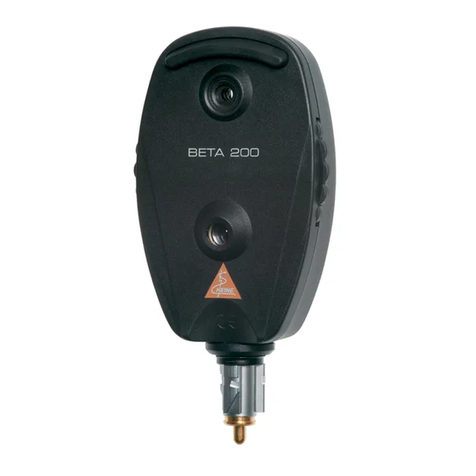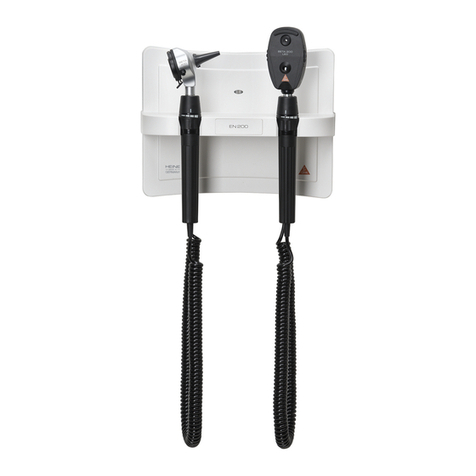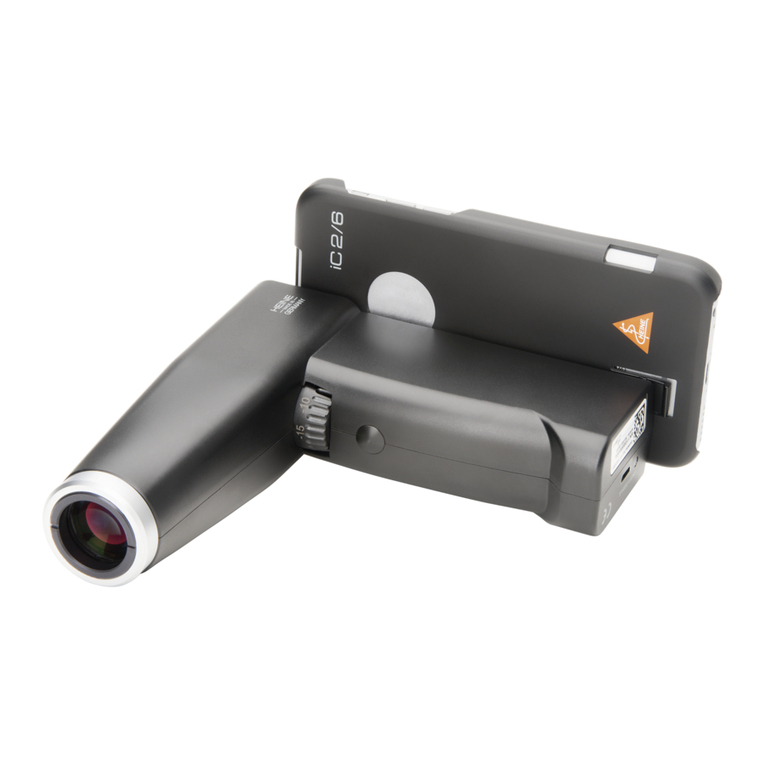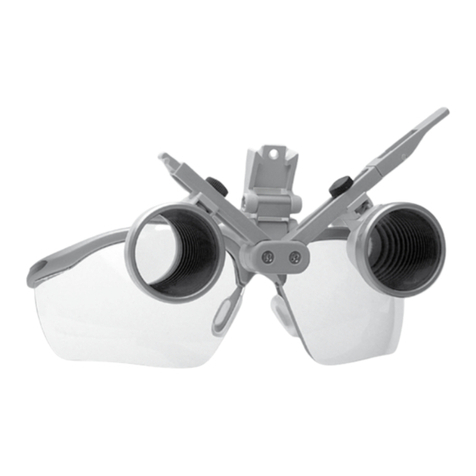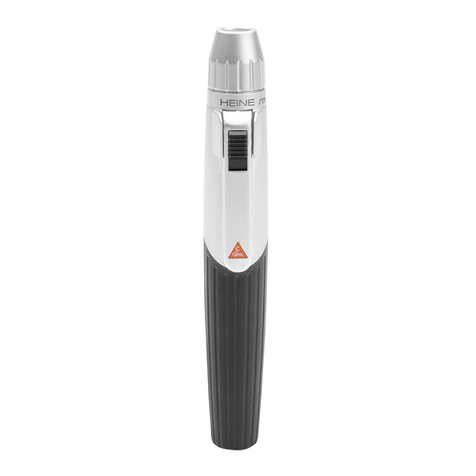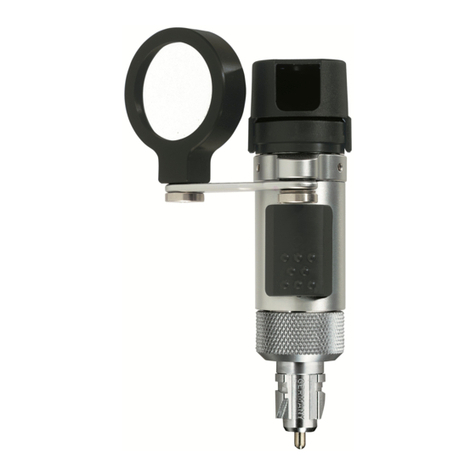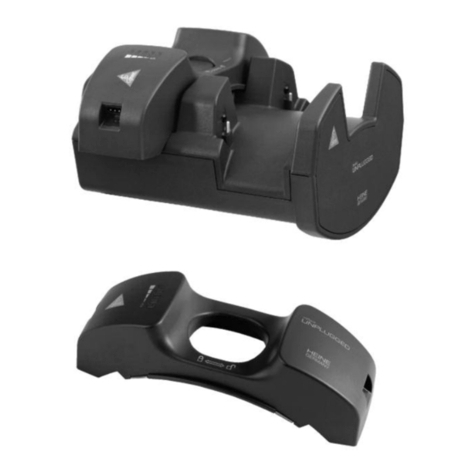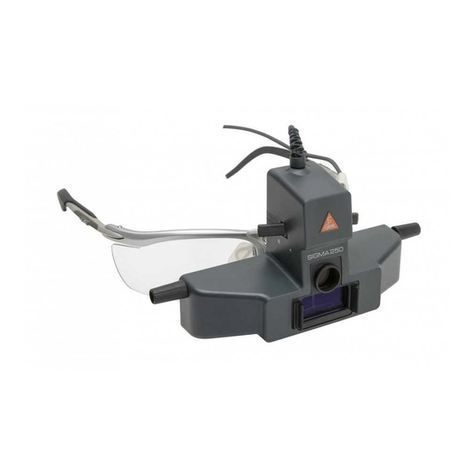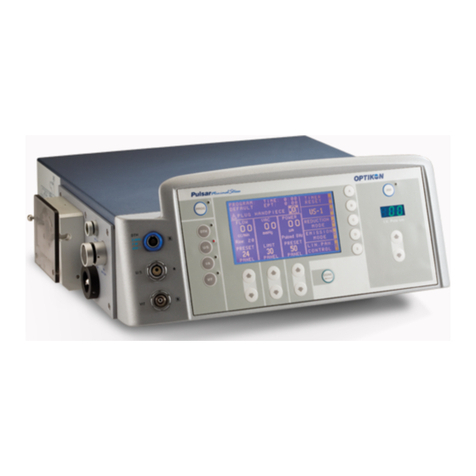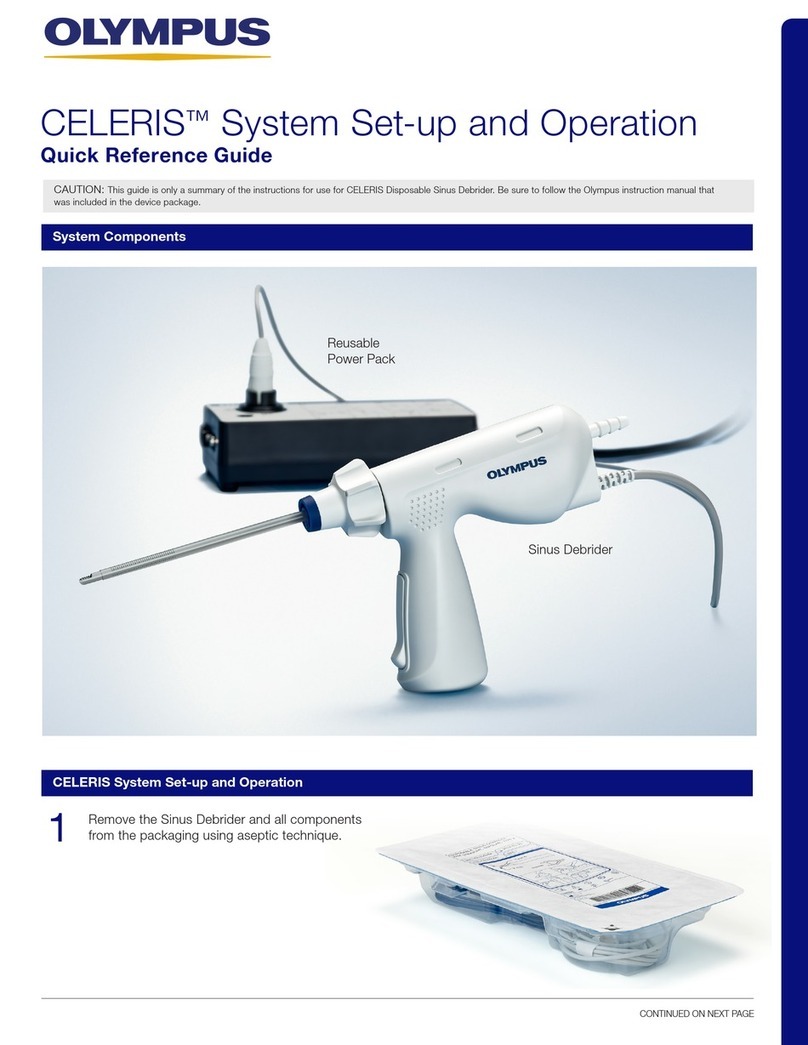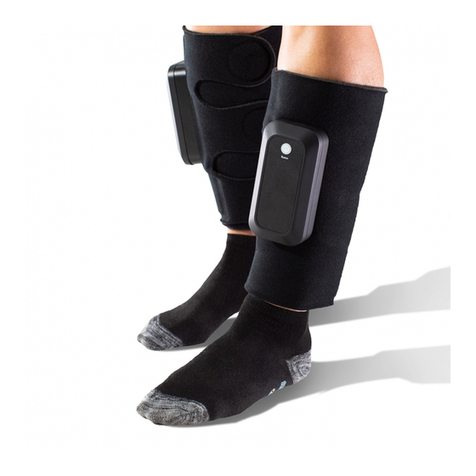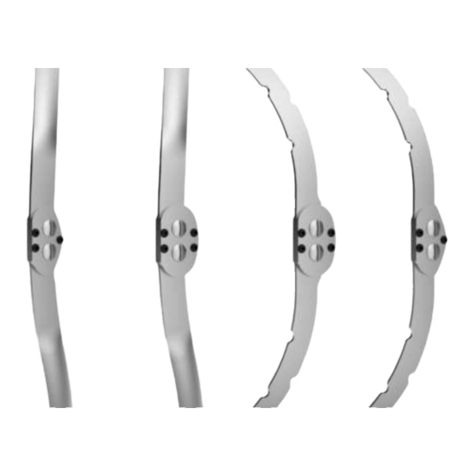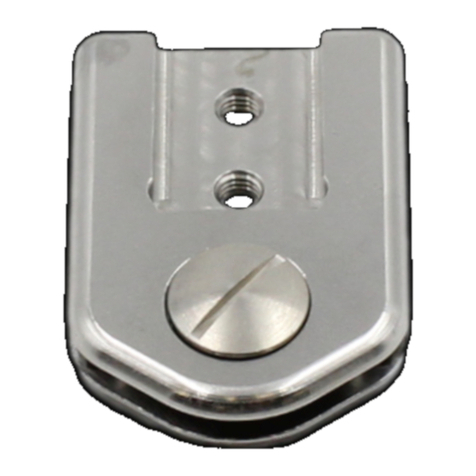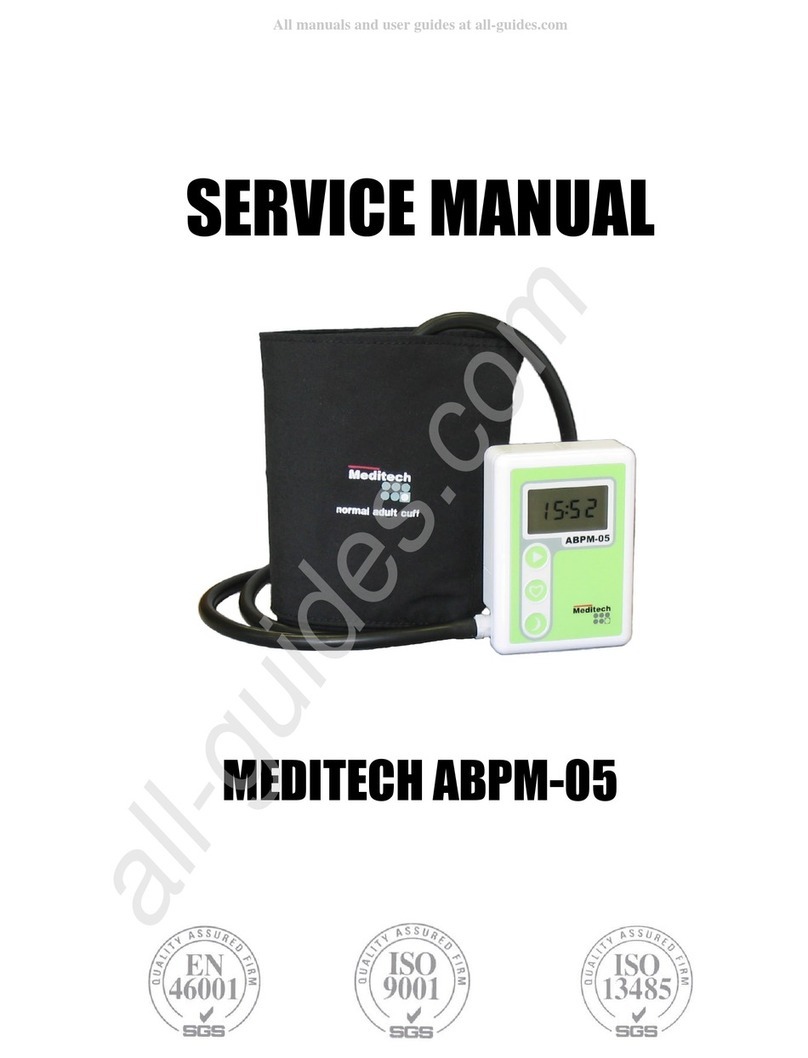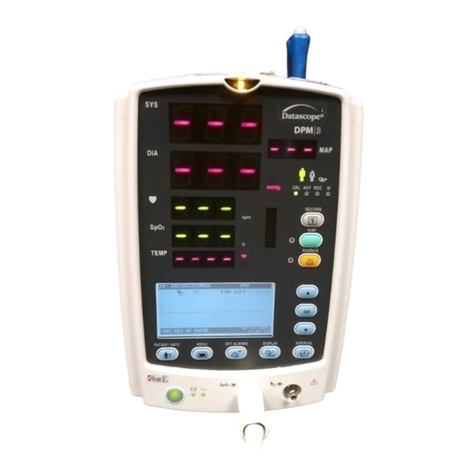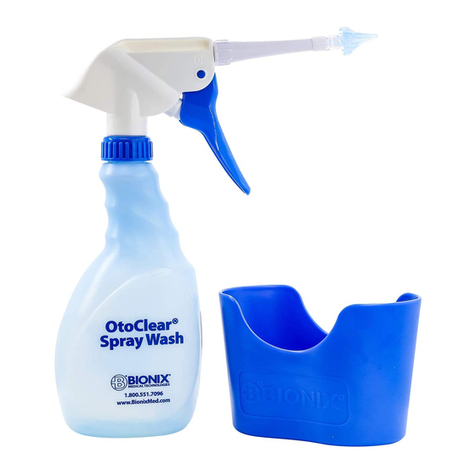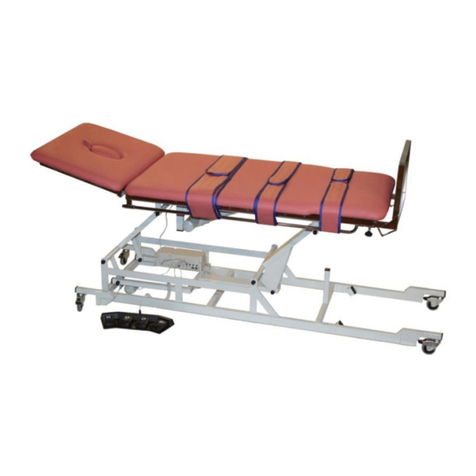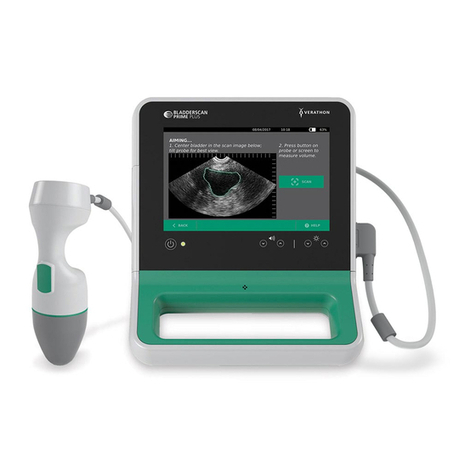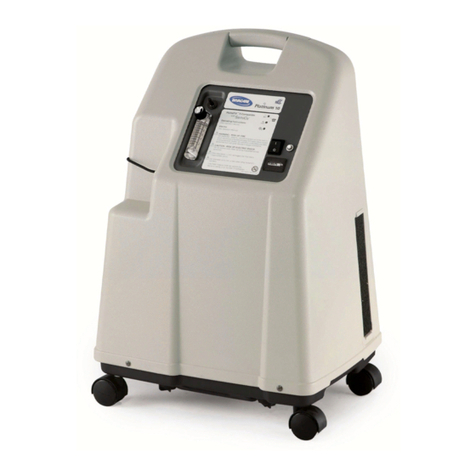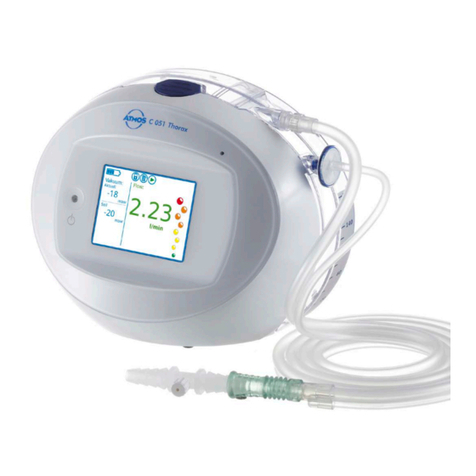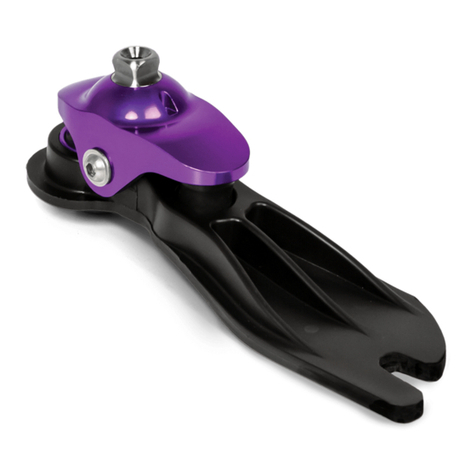6/28 med 0415 2015-03-25
Removing the contact plate:
The contact plate (12) is attached by a bayonet fitting. To remove, simply
rotate the knurled ring counterclockwise and detach from the dermatoscope.
The small contact plate (13) can be used instead of the contact plate (12) for
the examination of inaccessible lesions. To remove it, simply hold the knurled
housing and pull off without twisting. When replacing, make sure that the light
port (16) faces the bulb/LED.
HEINE dermatoscopes are intended for a brief examination of less than
10 minutes with a 20 minutes break until the next application.
The setup and operation of the HEINE handles are described in a separate
instruction for use.
Hygienic Reprocessing
Instructions on hygienic reprocessing must be adhered to, based on national
standards, laws and guidelines.
Classication according to KRINKO: non-critical
Spaulding Classication USA: non-critical
Allow the device to cool down before reprocessing.
In the event of suspected contamination, the instruments should be
forwarded for reprocessing immediately.
The described cleaning and disinfection measures do not replace the
specic rules applicable for the establishment.
HEINE Optotechnik only approves the agents and procedures
mentioned below.
Cleaning and disinfection may only be carried out by personnel with
sufcient hygienic knowledge.
Observe the instructions of the manufacturer of the reprocessing media.
Do not use spray or immersion disinfection, dripping wet or heavily
foaming tissues. Do not use ultrasonic reprocessing. Do not use
reprocessing media including alcohol.
The contact plates have to be cleaned and/or disinfected after each use.
They should only be sterilized after the treatment of high risk patients.
The mini3000 contact plate up to 4 times max., the DELTA 20 Plus
contact plate up to 25 times max.
Steam sterilization of the instrument heads, the lter inserts (9), the small
contact plates of the DELTA 20 Plus and DELTA 20T(8), of the mini3000,
mini3000 LED dermatoscope (13) and the contact plate of the NC1
dermatoscope (11) and the DELTA 20T(1e+1f ) is not allowed.
Procedure
Instrument head:
Clean and disinfect the head of the dermatoscopes manually (clean and
disinfect through wiping)
Recommended agents:
Cleaning agent: Neodisher®MediClean
Disinfectant agent: quaternary ammonium compounds (e.g. Microbac®
Tissues)
Contact plates:
Clean and disinfect the contact plates manually after removing from the
instrument head (clean and disinfect through wiping).
Before cleaning or disinfection you can remove the additional lens of
the NC1 dermatoscope, but you must remove the lter insert of the
DELTA 20 Plus and of the DELTA 20T.
Recommended agents:
Cleaning agent: Neodisher®MediClean
Disinfectant agent: quaternary ammonium compounds (e.g. Microbac®
Tissues)
The contact plates can be reprocessed up to 1000 cycles (without
autoclaving).
The contact plates of the DELTA 20 Plus (1a-1d) and of the mini3000,
mini3000 LED dermatoscope (12) can be sterilized once they have been
removed from the instrument head and the lter inserts have been removed.
Recommended programs of sterilization:
Steam sterilization: 132-134°C; 3 min
Fractional vacuum procedure (three-times) or gravitational procedure
(three-times).
Changing the light source
Allow the device to cool down before changing the bulb.
HEINE DELTA®20 Plus, HEINE DELTA® 20T, HEINE®NC1 and
HEINE mini3000®LED Dermatoscope:
The LED cannot be changed.
HEINE mini3000®Dermatoscope:
Remove the instrument head from the handle and pull out the bulb.
Wipe down the head of the new bulb with a soft cloth Insert the new bulb as
far as possible into the socket.
Maintenance and Service
The instruments do not require maintenance or service.
General Warnings
Check the correct operation of the device before use! Do not use the
device if there are visible signs of damage or the light begins to ash.
Do not use the device in re- or explosive risk area (e.g. oxygen
saturated or anaesthetic environments)
Do not modify the device.
Use only original HEINE parts, spare parts, accessories and power
sources.
Repairs shall only be carried out by qualied persons.
Do not look directly into the light source to avoid dazzle from the intense
light. The dermatoscopes are not suitable for eye examination.
General Notes
The warranty for the entire product is invalidated if non-genuine HEINE
products or non-original parts are used and if repairs or modications
are made to the device by persons not authorized by HEINE. For more
information, please visit www.heine.com.
If you don’t use the device for a longer period of time, please remove the
batteries in advance.
Disposal
The product must be recycled as separated electrical and electronic
devices. Please observe the relevant state-specic disposal regulations.
Electromagnetic Compatibility
Medical electric devices are subject to special precautionary measures with
regard to electromagnetic compatibility (EMC). Portable and mobile high
frequency communication equipment can affect medical electric devices.
This is a device in the domestic environment, this device may cause
radio interference, so that it may be necessary in this case, to take
appropriate remedial measures, as e.g. orientation, new arrangement
or shielding of the device or restrict the connection to the site.
The use of accessories, converters or cables other than the ones speci-
fied by HEINE might lead to increased emission and reduced electrical
immunity of the medical equipment.
The device may not be stacked directly near or used directly beside
other devices. If the device is to be operated in a stack or with other
devices, the device should be watched to ensure it operates properly
in this location.
The appendix contains following tables:
- Guidance and manufacturer’s declaration – Electromagnetic immunity
- Technical specification
- Explanation of the used symbols






